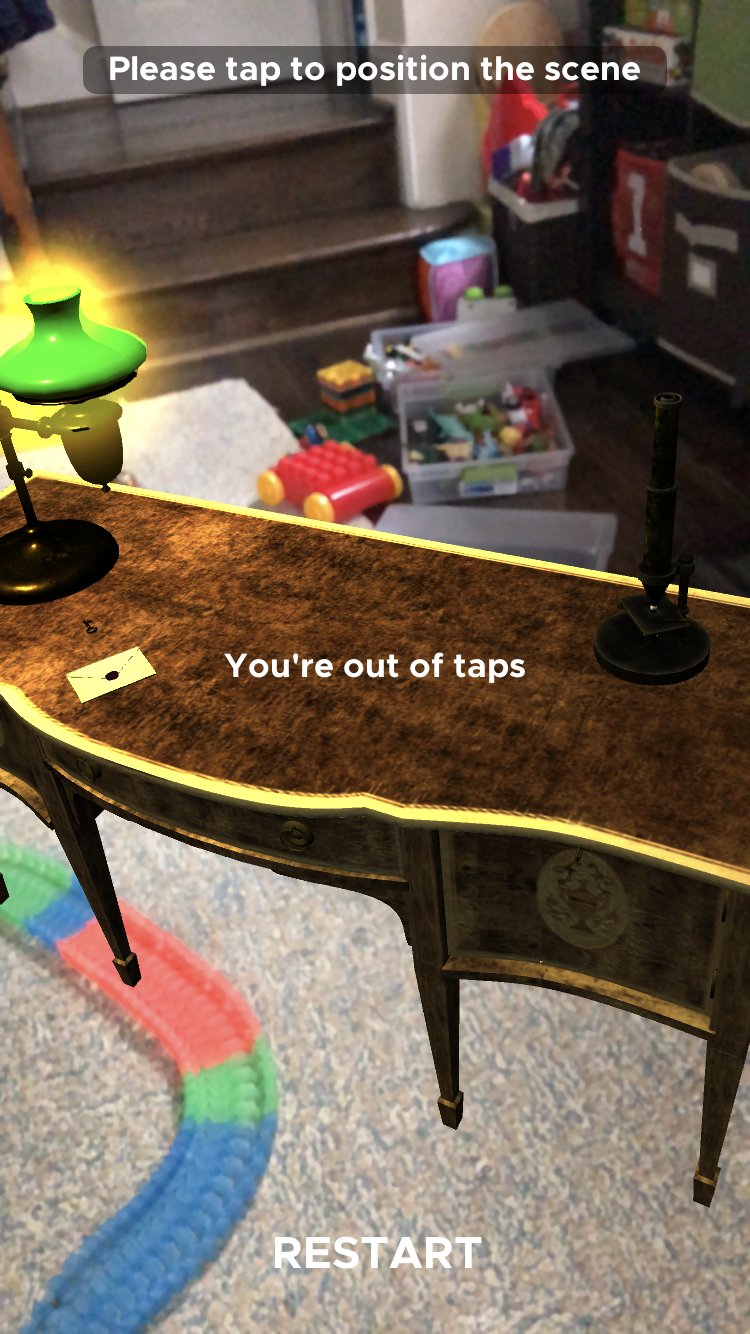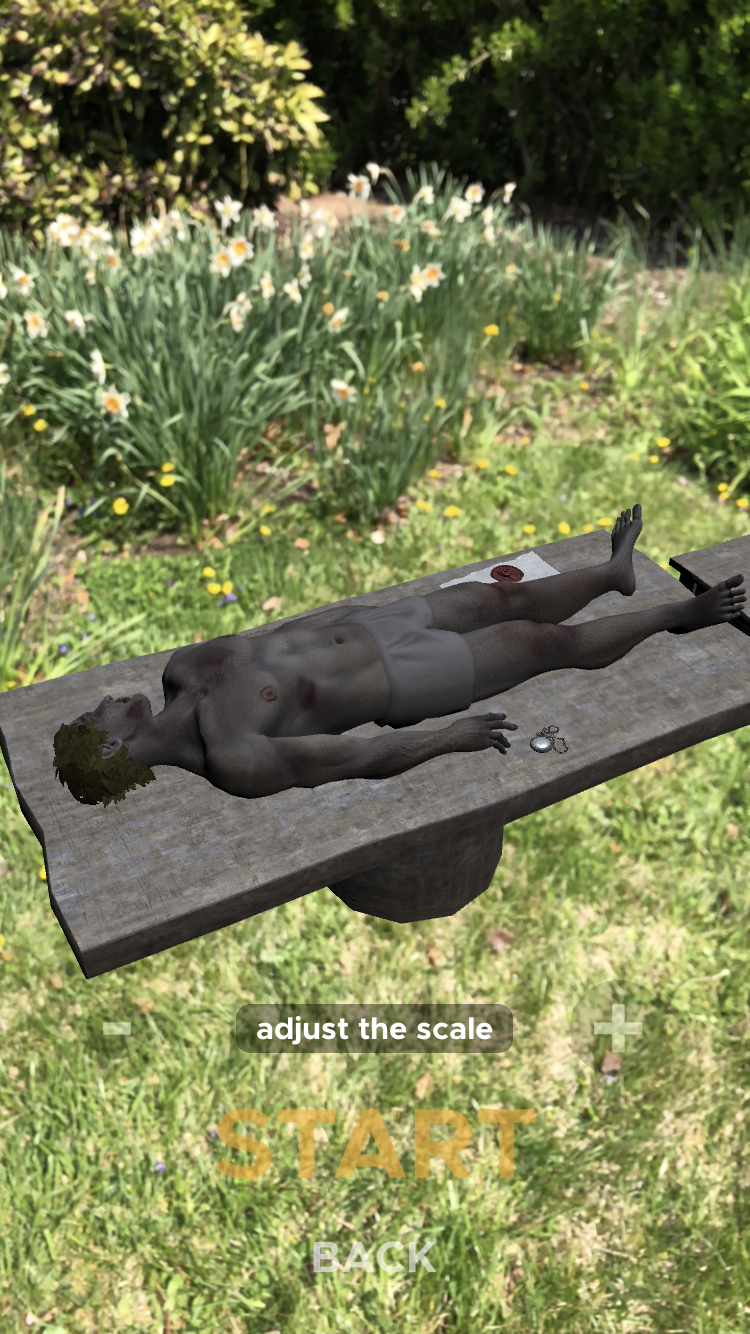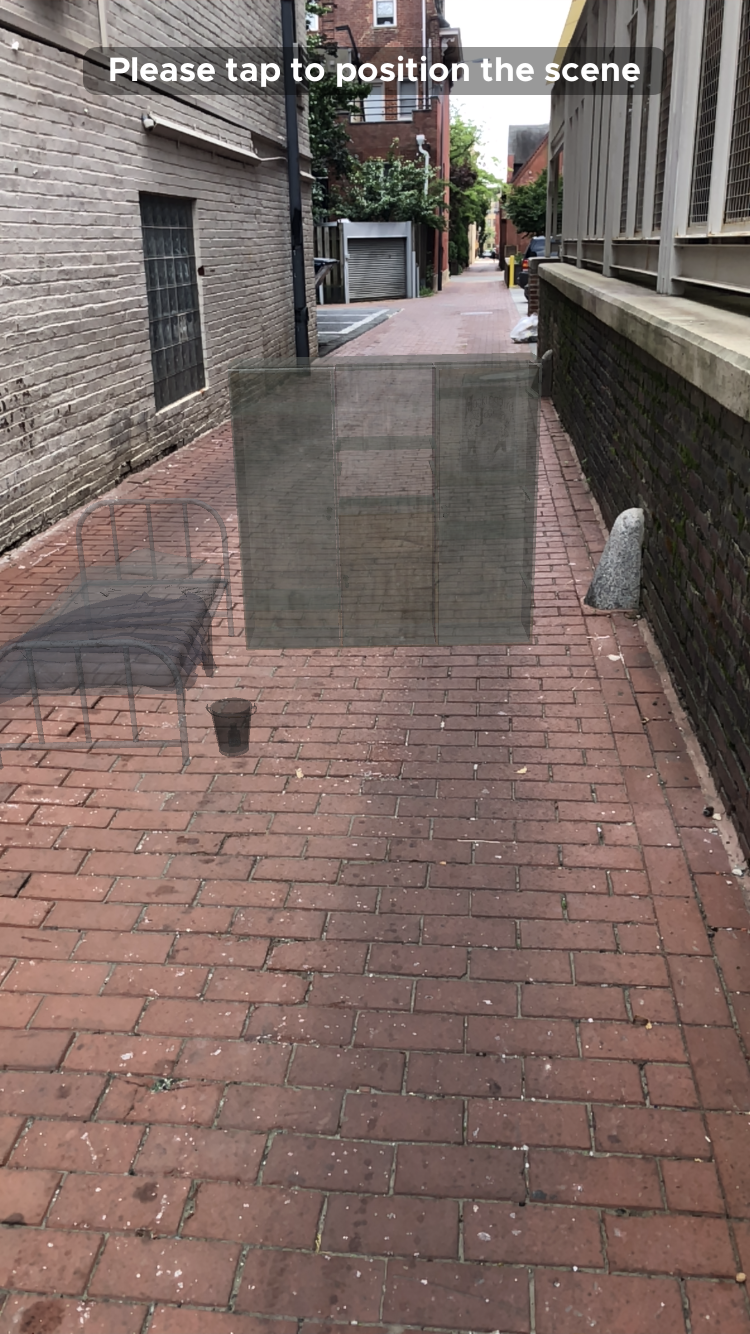Acting strangely in the alleys of Silent Streets
I have long been interested in pairing exploration of the real world with storytelling. I’ve gone on podcasts to talk about it, I’ve presented at major conferences about it, I’ve certainly written about it here numerous times, and heck, I’m even paid to think about it professionally.
A facet of that interest has crept into my life over the last couple years via the new fangled technology of augmented reality (AR). During one of those aforementioned conference presentations I ad libbed a definition of this new kind of AR that I’ve stuck with ever since: you point your phone at a real life thing and a thing happens on the screen.
A quiet movement among the cacophony of AR releases has been growing louder and it warms my heart to hear it. Experimentation with the form is happening and while I haven’t yet seen anything totally astounding happen with AR, surely those experiences will be in our hands soon.
I downloaded the app Silent Streets forever ago after I learned that it’s a geolocation game featuring a story that unlocks as you walk around the world. Further, the game has AR features which at the time were entirely foreign to me.
Diving in, I really liked the story and the writing, but the AR elements felt incredibly out of place and frankly, boring. At certain moments in the game you’d stop, your phone’s camera would activate, and you’d have to “investigate” the scene by whirling around trying to find some random object floating in space.

Understandably that was as far as the technology had progressed at the time for our phones’ cameras couldn’t do much more, but it wasn’t exactly thrilling stuff. I liked the pedometer aspect of unlocking the story in the game. To get the next narrative beat, you had to physically walk a certain number of steps.

It didn’t matter where you went, you just had to move, which was good for my lunch break excursions on nice weather days. Most of the time you’d arrive to the fictional location and would talk with a character, making dialogue choices that would affect their attitude toward you.

I played and completed the first episode with a shrug. Again, I thought elements of it were done well but overall it felt rather disjointed. The game promised more episodes so I decided that I would reserve my judgement/blog post for when I could experience more of Silent Streets. Plus, one of the developers had reached out to me on Twitter to show off some of the new AR they were working on and it looked interesting.

Later, after my memory of the game had faded, I saw a headline promoting an app called Silent Streets: Mockingbird and after some poking around, realized that this new app was that second episode, delivered. My confusion shifted to realization: of course they’d need to ship a new app if they’re using the new AR camera tech that Apple and Google had recently released. Over the next fews months I played this new game.
Once again I found myself liking the world and characters of Silent Streets and drawn into its story, but unfortunately its actual game mechanics were so clunky and at odds with each other, it took me a very long time to actually complete the thing.
Silent Streets: Mockingbird continues the format from the first episode where you walk certain real-life distances to mimic your character walking around the city as part of their investigation. That all works very well and the developers fixed a lot of the small frustrations I had with the first episode. Every so often you’re delivered to a crime scene rendered using augmented reality within your phone’s camera view. There you must poke around, interacting with the crime scene’s objects to find clues.

When I first arrived at one of these scenes I was ecstatic as it was very much the sort of thing I hoped AR could accomplish. A tactile puzzle that depends on your physical point of view while also being supported with the context of a well-written story.
As I played, multiple, significant problems with the design of these AR scenes quickly emerged. First, they’re accompanied by a countdown timer which, rather than thoughtful exploration, induces frenzied tapping on whatever objects in the game world don’t seem nailed down. Worst still, is that you have limited “taps”, which I imagine is supposed to keep you from randomly tapping around and to make you think about what you’re selecting.

You must start the scene over if you run out of time or have tapped on things too much. More often the combination of the two mechanics was very frustrating, especially when there were objects in these little vignettes which seemed like they were supposed to be utilized.

Any tension that was to be established by a tight time limit was immediately undercut by having to restart the scene over and over again. Limiting a player’s ability to explore the scene was entirely unnecessary. I think I understand what behavior the game designers were hoping to discourage but ultimately they actually did exactly the opposite. Instead of feeling like I was thoughtfully investigating the scene of a crime, I just tried to get through them as quickly as possible.
Unfortunately, my disagreement with the Silent Streets: Mockingbird’s design doesn’t end there. Simply put, the AR elements entirely clash with the pedometer mechanic. Say you’re out playing the game and have just reached the number of steps needed to unlock the next story segment. Except that this time, instead of being presented with a character with whom you’ll explore dialogue options, you’re given one of those AR scenes to explore. The problem is that you’re often in a place where physically moving around an imaginary scene is inappropriate. For instance, I once started the game while exiting the train on my morning commute, hoping to use the long walk to my office as a way to unlock the next story segment. Except that just as I was exiting the station, I was presented with a morgue scene that I needed to complete before moving on. It wasn’t a great place to examine a dead body.



Other times I’d be walking along outside, would once again would unlock an AR moment. I’d again have to decide if I didn’t mind looking weird in public that day, if I was willing to duck into the nearby alley to play, or if I’d turn the whole thing off until I got to the privacy of my own home. Eventually I just wanted to finish the game once and for all, so I began to care less about what I looked like whirling around on the street– the AR scenes were fairly quick and meaningless anyway.

There’s a lot to like about Silent Streets: Mockingbird. The writing is solid, the characters and mysteries are interesting, and the pedometer mechanic works very well. The augmented reality, while significantly improved from the first installment, is a fun idea but needs major redesign. Perhaps, the AR bits can be semi-optional, separate nodes on the game’s world map. You still need to visit them to move forward in the game, but can tackle them when you’re ready and physically in a better real-world space to do so.
I love the idea of AR investigation though, and at least to my knowledge, no one has really done it in this way yet. I’m totally down for something that combines the puzzle box genius of games like The Room and GNOG, but with a well-written story to tie it all together.
I appreciate Silent Streets: Mockingbird for pushing the medium forward, and despite all my criticism, I look forward to what they try next. I’ll gladly dive into anything that will get me away from my desk and out walking around. I really have to stop working through my lunch break.



One thought on “Acting strangely in the alleys of Silent Streets”
Comments are closed.